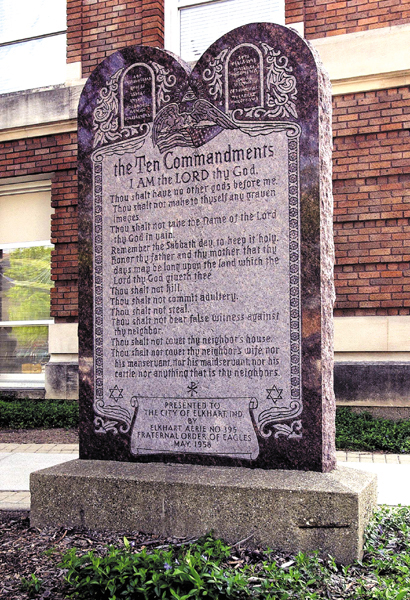Ten Commandments Banned

A divided Supreme Court let stand a lower court ruling that found the display of the Ten Commandments in front of a municipal building unconstitutional. Two residents of Elkhart, Indiana, backed by the American Civil Liberties Union, had sued their city to remove the 6-foot-tall granite monument, which bears the Ten Commandments along with two small Stars of David, the Greek letters chi and rho (the first two letters of Christ), an eye within a pyramid (as on a one-dollar bill) and an eagle clutching an American flag. Erected in 1958, the monument was the brainchild of a local judge who hoped the inscription would have a positive influence on troubled teens.
Chief Justice William H. Rehnquist and Justices Antonin Scalia and Clarence Thomas disagreed with the court’s decision not to review the case, noting that the commandments bear not only religious but also legal significance. The placement of the monument outside Elkhart’s municipal building, which houses the local courts, “simply reflects the Ten Commandments’ role in the development of our legal system,” Rehnquist wrote.
Justice John Paul Stevens, taking issue with Rehnquist, noted the prominence of the words “I am the Lord thy God” at the top of the monument. He wrote: “The graphic emphasis on those first lines is rather hard to square with the proposition that the monument expresses no particular religious preference—particularly when considered in conjunction with…two Stars of David and a symbol…that represent[s] Christ.”
Already a library member? Log in here.
Institution user? Log in with your IP address.

